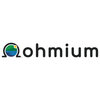
i
INSPIRE CLEAN
ENERGY
Filter interviews by
INSPIRE CLEAN ENERGY Interview Questions and Answers
INSPIRE CLEAN ENERGY Interview Experiences
7 interviews found
I applied via Company Website and was interviewed in Feb 2023. There were 3 interview rounds.

(2 Questions)
- Q1. Basic details questions related to previous work.
- Q2. Most important question what is your privious salary structure.
(3 Questions)
- Q1. What is wave trap why we use in substation
- Ans.
A wave trap is a device used in substations to prevent high-frequency communication signals from entering or leaving the substation.
Wave traps are used to isolate the substation from high-frequency communication signals that can interfere with the power system.
They are typically installed on the incoming and outgoing transmission lines of the substation.
Wave traps consist of a series of inductors and capacitors that cr...
- Q2. Why capacitor bank used
- Ans.
Capacitor banks are used to improve power factor, reduce reactive power, and increase the efficiency of electrical systems.
Capacitor banks are used to correct power factor in electrical systems.
They help reduce reactive power and improve the efficiency of the system.
Capacitor banks are commonly used in industries, commercial buildings, and power distribution systems.
They are also used in electric motor applications to ...
- Q3. No of questions from power transformer.
Interview Preparation Tips
I applied via Company Website

(2 Questions)
- Q1. What is Solar Power Generation
- Ans.
Solar power generation is the process of converting sunlight into electricity using solar panels.
Solar power generation harnesses the energy from the sun to produce electricity.
It involves the use of solar panels, which contain photovoltaic cells that convert sunlight into direct current (DC) electricity.
The DC electricity is then converted into alternating current (AC) electricity using an inverter.
Solar power generat...
- Q2. How can we generat more electricity using solar
- Ans.
To generate more electricity using solar, we can increase the efficiency of solar panels, use advanced tracking systems, and implement solar power storage solutions.
Increase the efficiency of solar panels by using high-quality materials and improving manufacturing processes
Utilize advanced tracking systems to maximize the amount of sunlight captured by solar panels throughout the day
Implement solar power storage soluti...
I applied via Internshala and was interviewed before Oct 2022. There were 2 interview rounds.

(2 Questions)
- Q1. Tell me about your self ?
- Q2. Commute to workplace on daily basis?
I applied via Job Portal and was interviewed before Oct 2022. There were 2 interview rounds.

(2 Questions)
- Q1. Tell me about yourself
- Q2. Willingness to commute
I applied via Referral and was interviewed before May 2021. There was 1 interview round.
(1 Question)
- Q1. How we can maintain good generation
- Ans.
Good generation can be maintained by ensuring proper maintenance of equipment and regular training of personnel.
Regular maintenance of equipment
Proper training of personnel
Using advanced technology
Implementing safety measures
Monitoring and analyzing data
Continuous improvement
Collaboration with other departments
Effective communication
Interview Preparation Tips
- Installation
I applied via LinkedIn and was interviewed before Dec 2020. There was 1 interview round.
Interview Questionnaire
1 Question
- Q1. About you? Just normal conversations on your experiences and knowledge
Interview Preparation Tips
I applied via Indeed and was interviewed before May 2020. There were 3 interview rounds.
Interview Questionnaire
1 Question
- Q1. Basic questions about DC side , AC side and testing related questions
Interview Preparation Tips
Top trending discussions






Interview questions from similar companies

Basics aptitude and questions related to gases
Impact of covid on education
(1 Question)
- Q1. Reasoning and interview questions
Interview Preparation Tips

Engineer Trainee Interview Questions & Answers
Dhoot Transmissionposted on 28 Nov 2022

Basic mathematics, reasoning ang technical
(2 Questions)
- Q1. Basic knowledge about your field
- Q2. Basics of aptitude and reasoning
Interview Preparation Tips


(2 Questions)
- Q1. Boiler MFT, furnace purge Permissive, APH pa, sa and flue gas ratio, boiler losses etc.
- Q2. Working drum elements system
- Ans.
A working drum elements system is a mechanism that allows for the efficient and effective movement of drums.
The system should be designed to handle drums of various sizes and weights
It should include components such as rollers, conveyors, and lifters
The system should be automated to reduce manual labor and increase productivity
Regular maintenance and inspections are necessary to ensure the system is functioning properl...
INSPIRE CLEAN ENERGY Interview FAQs
Tell us how to improve this page.
INSPIRE CLEAN ENERGY Interviews By Designations
- INSPIRE CLEAN ENERGY Engineer Trainee Interview Questions
- INSPIRE CLEAN ENERGY Engineer Interview Questions
- INSPIRE CLEAN ENERGY Lead Engineer Interview Questions
- INSPIRE CLEAN ENERGY Human Resource Recruiter Intern Interview Questions
- INSPIRE CLEAN ENERGY Junior Engineer Interview Questions
- INSPIRE CLEAN ENERGY HR Recruitment Intern Interview Questions
Interview Questions for Popular Designations
Overall Interview Experience Rating
based on 5 interview experiences
Difficulty level
Duration
Interview Questions from Similar Companies
INSPIRE CLEAN ENERGY Reviews and Ratings
based on 56 reviews
Rating in categories
|
Senior Engineer
9
salaries
| ₹3.6 L/yr - ₹7 L/yr |
|
Engineer
8
salaries
| ₹2 L/yr - ₹4.5 L/yr |
|
Junior Engineer
6
salaries
| ₹1.5 L/yr - ₹3.5 L/yr |
|
Solar Technician
5
salaries
| ₹2 L/yr - ₹2.5 L/yr |
|
Electrical Engineer
5
salaries
| ₹2 L/yr - ₹4 L/yr |

Dhoot Transmission

R.K.M Powergen

SHV Energy

Operational Energy Group India
- Home >
- Interviews >
- INSPIRE CLEAN ENERGY Interview Questions













